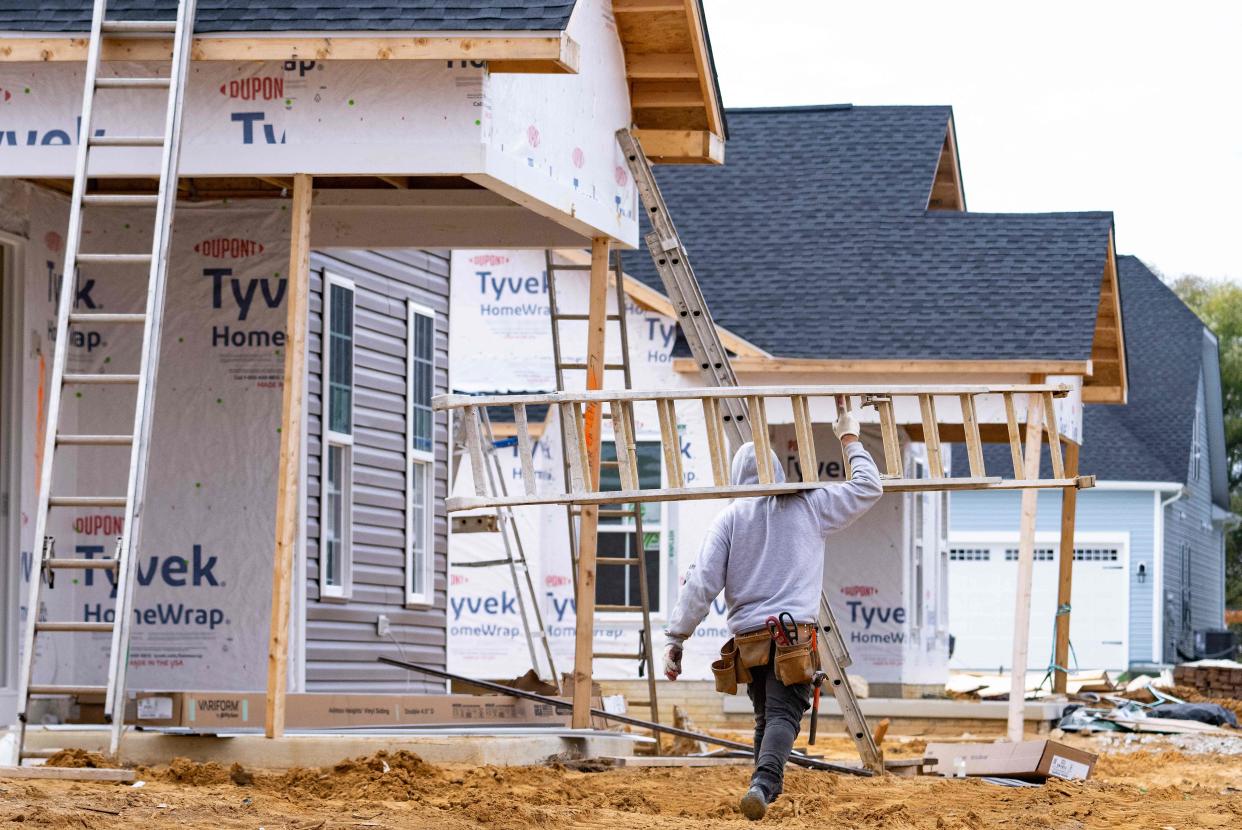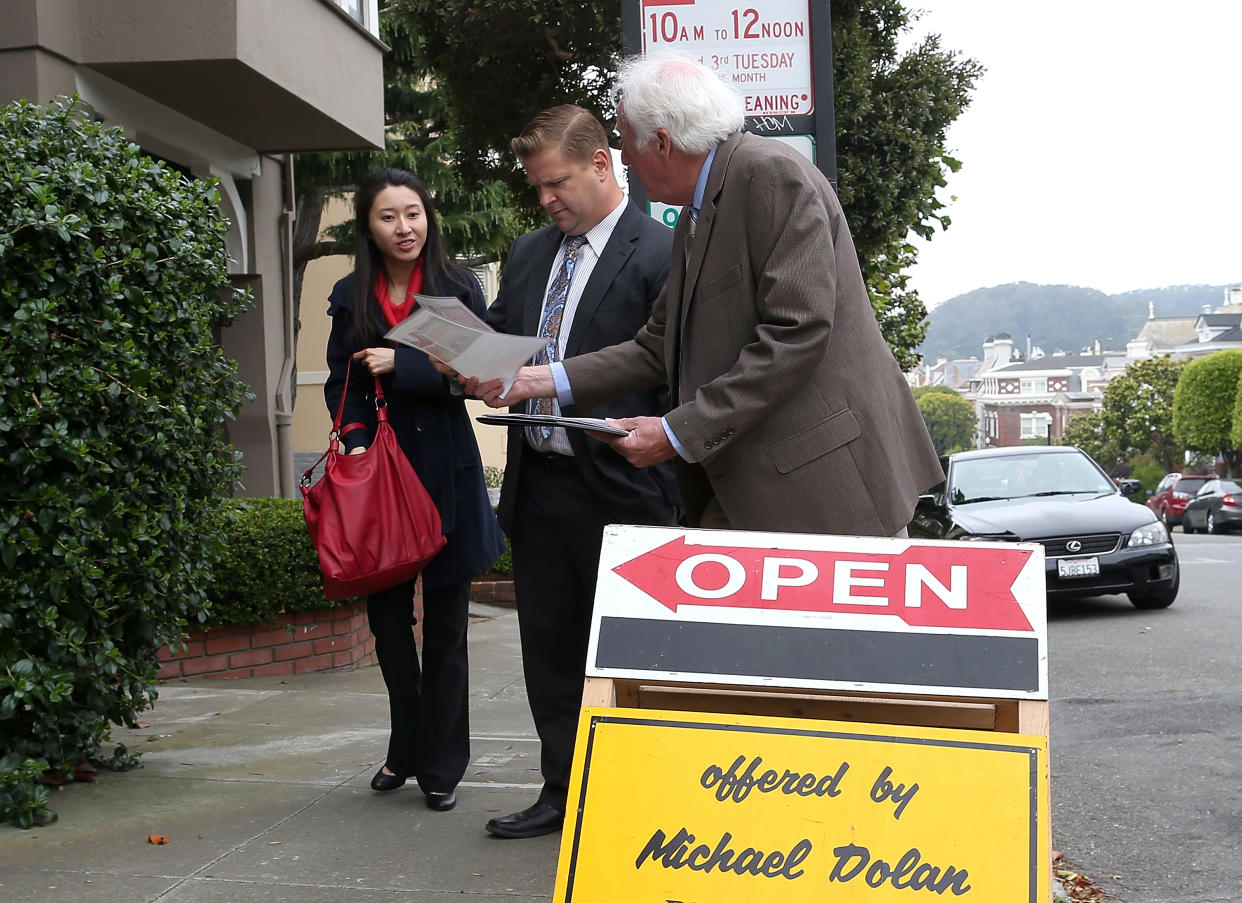Return to the '70s? Today's housing market has echoes of dark era.
High inflation and a disappointing report on economic growth — followed by a sudden drop in stocks late last month — made for a familiar economic combination.
These conditions were hallmarks of the 1970s, when inflation ran high, leading the Federal Reserve to hike interest rates. The central bank’s measures to tame inflation drove up borrowing costs for real estate developers and ultimately shrunk homebuyers' purchasing power.
As a result, the housing market stagnated, and the decade itself became synonymous with stagflation, an economic cycle characterized by high inflation, tepid growth, and weak employment, leading to a stagnant economy.
While those trends may sound familiar, the current housing market is resilient. Not to mention, job growth is solid.
The major problem today: a dearth of inventory.
“You could argue that there is weakness in the housing market at the moment, caused by a supply-side shock,” Mark Fleming, chief economist at First American, told Yahoo Finance. “In other words, restriction in the supply of a good, which is causing inflation. … But I wouldn’t say we are in stagflation,” noted Fleming. “The problem isn’t weak demand, it’s weak supply.”
Claudia Sahm, former Fed economist and chief economist at New Century Advisors, LLC, agreed with this sentiment.
“This is not stagflation,” said Sahm. “GDP numbers look soft, but consumer spending is just trucking along. ... But we are in this ongoing struggle with inflation, and people call inflation all sorts of things.”
Read more: Mortgage rates top 7% — is this a good time to buy a house?

A housing supply gap of 6.5 million homes
At its root, inflation is a result of an imbalance of supply and demand.
In the housing market, weak inventory was a problem that existed prior to the pandemic due to over a decade of underbuilding. When interest rates fell to record lows, buyers who swarmed the market were met with scarce inventory.
This resulted in bidding wars, frenzied buyers forgoing inspections to close deals faster, and home prices climbing to record levels in some hot markets.
“We had weakness before the pandemic, and the pandemic just blew it up,” Sahm said. “That was absolutely the case with housing.”
As homeowners hunkered down and focused on refinancing at lower rates during the pandemic, homebuilders saw an opportunity to boost the nation’s supply of homes.
As of March, there were 477,000 new single-family homes available for purchase in various stages of development, versus 970,000 existing single-family homes.
Overall, new construction accounted for one-third of the inventory on the market that month — well above the 12% average, according to data provided by the National Association of Home Builders (NAHB).
However, even after all that building overall inventory remains tight.

While builders are responsible for much of the inventory currently available, the undersupply is also caused by homeowners who are “locked in” — sitting on ultra-low rates they don’t want to give up.
The US is still short of 6.5 million single-family homes compared to the number of families starting new households, Realtor.com found.
“In the 2010s, after all the homebuilders went out of business when the housing market bubble burst, they only built big houses because only rich people could buy back then,” Robert Frick, corporate economist at Navy Federal Credit Union, said. “So not only were we left with fewer houses, but a dearth of smaller houses where people can get started.”
What’s changed? “Homebuilders are now building smaller houses,” Frick said.
In some ways, that imbalance of supply and demand is what’s reflected in the Consumer Price Index, an inflation gauge that shows prices for everyday goods, from gas and food to shelter and rent.
While shelter accounts for a third of the overall CPI reading, it is just a snapshot in time that fails to paint the picture of what homebuyers are experiencing today.
“Housing and shelter inflation is the only piece of the CPI that’s not telling us where we are at this moment,” said Sahm. “In terms of housing costs rising or falling, it’s telling us this story over time, and we’ve had big swings.”
While, yes, housing inflation is still running hotter than expected — it has also come a long way in the last couple of months.
Home prices increased 5.7% over the past year, according to the latest CPI, but were down from their peak of 8% in March 2023.
According to Sahm, shelter inflation has failed to reflect inventory that’s freshly entered the market, including new construction in the pipeline. As that supply enters the market, shelter inflation should continue to soften this year.
'You can’t buy what’s not for sale'

According to some housing experts, concerns about stagflation stem from a slower pace of sales in recent months.
For instance, the share of previously owned homes fell just over 4% in March, according to the National Association of Realtors (NAR). Year over year, sales were down nearly 4%.
While the number of existing homes on the market is showing signs of improvement, it is still near historic lows.
Still, despite sales slowing, demand is still there — even amid higher prices and interest rates.
“Buyers, even first-time homebuyers, are finding a way to purchase and afford something even at a 7% mortgage rate,” Fleming said.
The drag on the market is inventory, particularly on the existing home side of the market.
The inventory of unsold existing homes grew nearly 5% from the previous month to 1.11 million in March. According to the NAR, that’s the equivalent of just over 3 months of supply at the current sales pace. Still, that’s well below the six months needed for a balanced market.
“You can’t buy what’s not for sale,” Fleming said.
As of April, the national median listing price for active listings was $425,000, up just over 14% compared to a year ago, a separate study from Realtor.com found, and up just above 32% from April 2020 levels. Overall, active listings were down 60% from 2020.
“Prices remain sticky just because of that lack of inventory. We are still far from normalized levels of inventory,” Melissa Cohn, regional vice president of William Raveis Mortgage, told Yahoo Finance. “Until we get there, there’s still enough buyers out there that keep prices at higher levels despite high interest rates.”
Job markets are expanding

Unlike the 1970s era of stagflation, which had elevated unemployment rates coupled with high inflation — that’s not the case today.
The US labor market remained steady in April, although fewer jobs were added than expected. The Bureau of Labor Statistics also registered a slowdown in wage growth and a modest uptick in the unemployment rate.
Overall, some 175,000 new jobs were added to the US economy and the unemployment rate rose to 3.9% last month, the Bureau of Labor Statistics found. At the same time, average hourly earnings rose 0.2% from the previous month and 3.9% annually. That came in slightly below economists' projections of an annual increase of 4%.
“Spending is good, incomes are good, job markets are expanding at a good rate. That means more paychecks, more incomes, more spending,” said Frick. “I don’t have any worries about the economy.”
By contrast, in the 1970s, unemployment grew significantly while inflation ran high. Between 1970 and 1974, the average unemployment rate was 5.4%, according to the BLS.
The latest jobs report, though, improved expectations that the Federal Reserve would lower its benchmark interest rates at some point this year — even though inflation remains above its 2% target. That’s one positive for hopeful homebuyers wishing for a break on high borrowing costs.
“The sad situation is that the economy is doing fine, but rates and mortgage rates are high,” said Frick. “So we have this strange situation where the economy is firing, let’s say, on seven cylinders, but that eighth cylinder — housing — is just misfiring like crazy.”
Gabriella Cruz-Martinez is a personal finance and housing reporter at Yahoo Finance. Follow her on X @__gabriellacruz.
